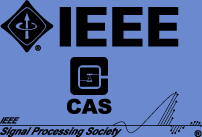Augmented Reality Soundscapes: Innovations in Spatial Audio Processing
In the fast-evolving realm where technology and sensory experiences intersect, Augmented Reality (AR) has emerged as a captivating domain. This immersive technology has transformed how we perceive the world around us, merging the digital and physical realms seamlessly. At the forefront of this revolution lies an aspect that's often overshadowed by visuals: audio. Welcome to the world of "Augmented Reality Soundscapes," a convergence of audio engineering, spatial audio, and technology innovation that's redefining our auditory encounters.
Augmented Reality Soundscapes represent the intricate fusion of spatial audio processing with AR, forging an auditory dimension that is as immersive and dynamic as its visual counterpart. This phenomenon is not merely about hearing sounds; it's about being enveloped by them, about sound sources reacting to your movements, about the reverberation of your virtual environment syncing with your every step. If you're seeking an in-depth exploration of the fascinating world of spatial audio in augmented reality, I recently came across an insightful book review (created on request “write my book review for me”) that might pique your interest. You can find it at https://123helpme.org/articles/write-my-book-review-for-me/ offering valuable perspectives on the subject.
Foundations of Spatial Audio
To embark on this auditory journey, let's start with the foundations. Spatial audio is the art of crafting a 3D auditory environment, where sound isn't just limited to left and right, but envelops you from all directions. Imagine closing your eyes and hearing a whisper that seems to emanate from right behind you. That's spatial audio at work. And the heart of this innovation? Realistic sound localization—the ability to pinpoint where a sound originates within a 3D space.
Advancements in Spatial Audio Processing
In the quest for auditory immersion, technology has unveiled remarkable innovations. Ambisonics, particularly Higher-Order Ambisonics (HOA), stands as a beacon. By using spherical harmonics to capture sound fields, Ambisonics offers a captivating experience where audio moves fluidly around you. Coupled with Wave Field Synthesis (WFS), which generates audio as if you're in a virtual sound field, these innovations ensure that the audio environment mirrors the real world, with all its sonic intricacies.
Object-Based Audio Rendering adds another layer of magic. Imagine a virtual object emitting sound—be it a musical instrument or a rustling leaf. Object-based audio renders these sounds independently, allowing for dynamic interaction and a heightened sense of presence within the augmented environment.
Augmented Reality Applications of Spatial Audio
Enter the real-world applications of this symphony of technology. In the realm of entertainment and gaming, AR soundscapes take you beyond the screen. You're not just playing a game; you're in it, with audio guiding your every move. Educational experiences become lifelike through spatial audio, making learning environments feel tangible and interactive.
The therapeutic potential is awe-inspiring. Augmented soundscapes can aid rehabilitation and offer solace to the visually impaired. It's a world where sound paints a vivid picture and provides a lifeline to those who might have otherwise been cut off from certain sensory experiences.
Technical Challenges and Solutions
Yet, no innovation comes without its challenges. Real-time processing, latency, acoustic modeling, and personalization—they all come into play. The solutions, though complex, are equally impressive. Advanced algorithms and computing power are at the helm, ensuring that your auditory journey isn't marred by delays or inaccuracies.
Collaboration and Interdisciplinary Insights
The beauty of AR soundscapes lies in their interdisciplinary nature. Collaboration between sound designers and visual artists creates multisensory masterpieces. Musicians and AR developers orchestrate auditory landscapes that harmonize with the virtual world. And the fusion of acousticians and computer scientists births innovations that push the boundaries of what's possible.
Book Review: "Spatial Audio in Augmented Reality"
One book that captures the essence of this phenomenon is "Spatial Audio in Augmented Reality." Authored by experts in the field, it delves deep into the intricacies of spatial audio processing within AR realms. The book's insights provide a roadmap for both novices and veterans to navigate this exciting terrain.
Future Trends and Opportunities
The path forward is promising. Standardizing AR audio formats ensures compatibility across devices. Ethical considerations address potential pitfalls, while market trends unveil an array of business prospects. Augmented reality soundscapes are set to reshape how we perceive our world.
Case Studies and Exemplary Projects
Augmented reality sound installations merge aesthetics with technology, creating awe-inspiring experiences. Notable AR gaming soundscapes aren't just about the visuals; they're sonic adventures. And educational applications, like a canvas, use audio to paint vivid landscapes of knowledge.
Conclusion
The innovations in spatial audio processing for augmented reality soundscapes are a testament to human creativity and technological prowess. As we recap the key takeaways from this journey, we're reminded of the sheer potential that lies ahead. The future holds immersive soundscapes, enriched experiences, and the boundless magic of merging the real and the virtual.





